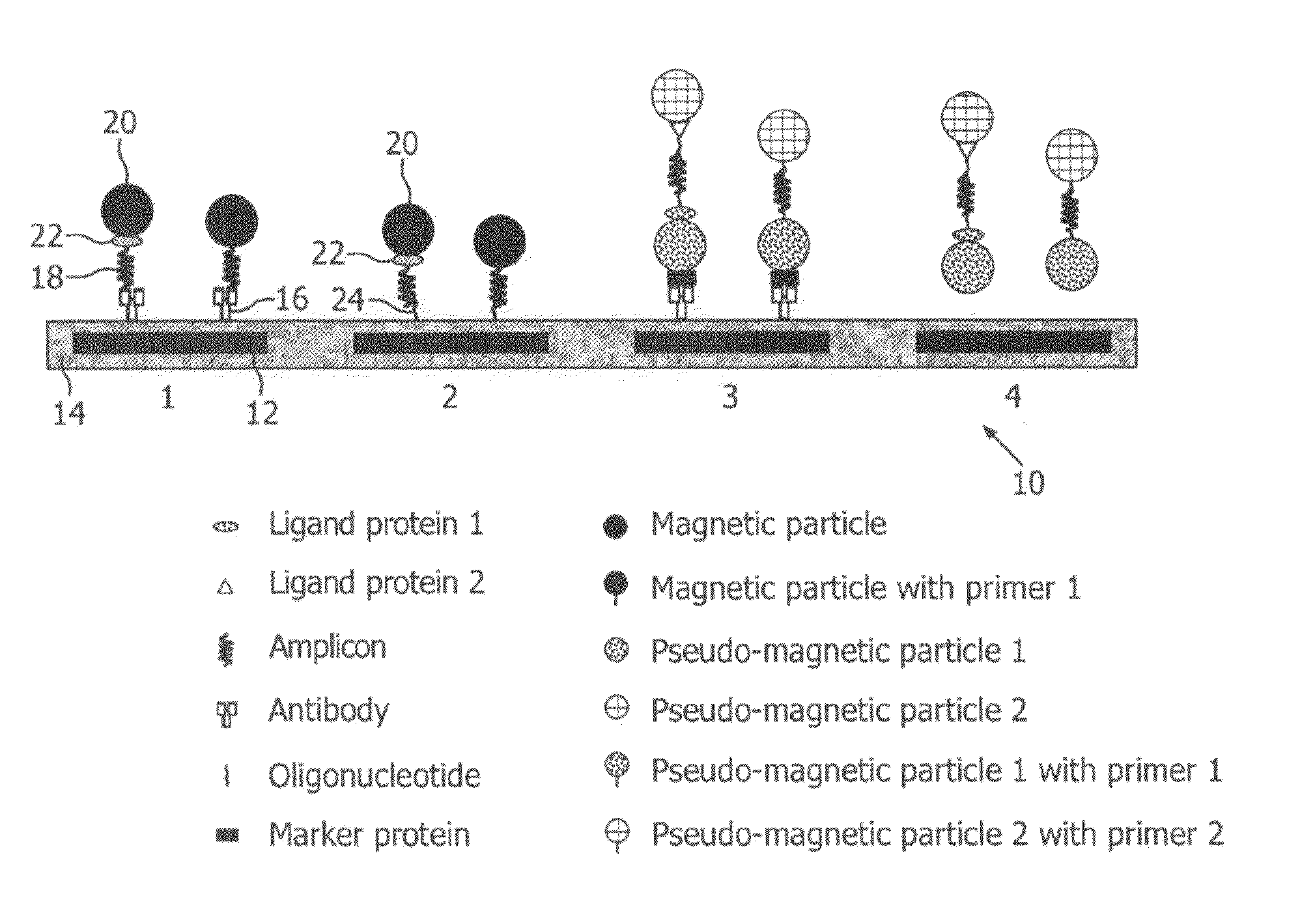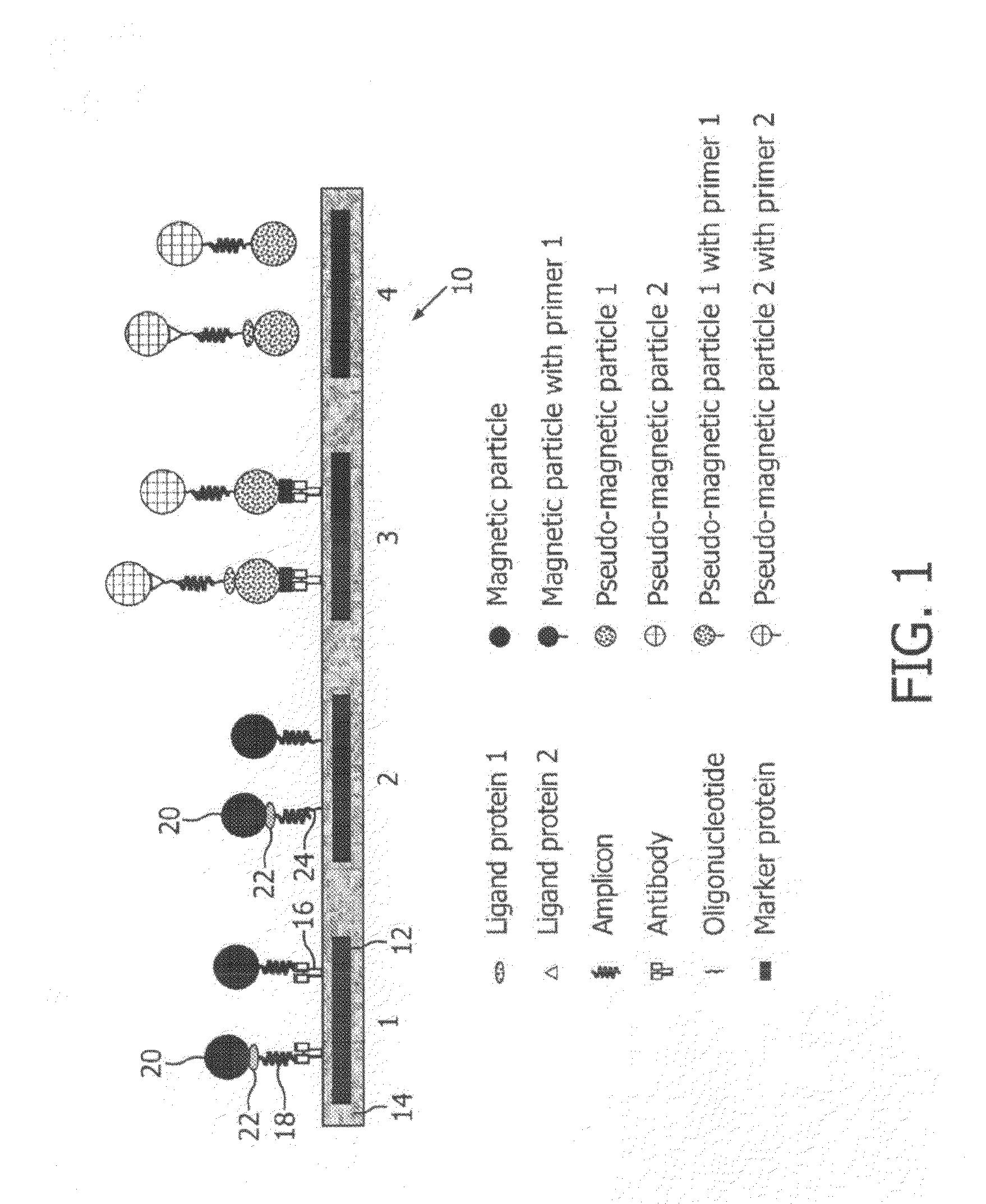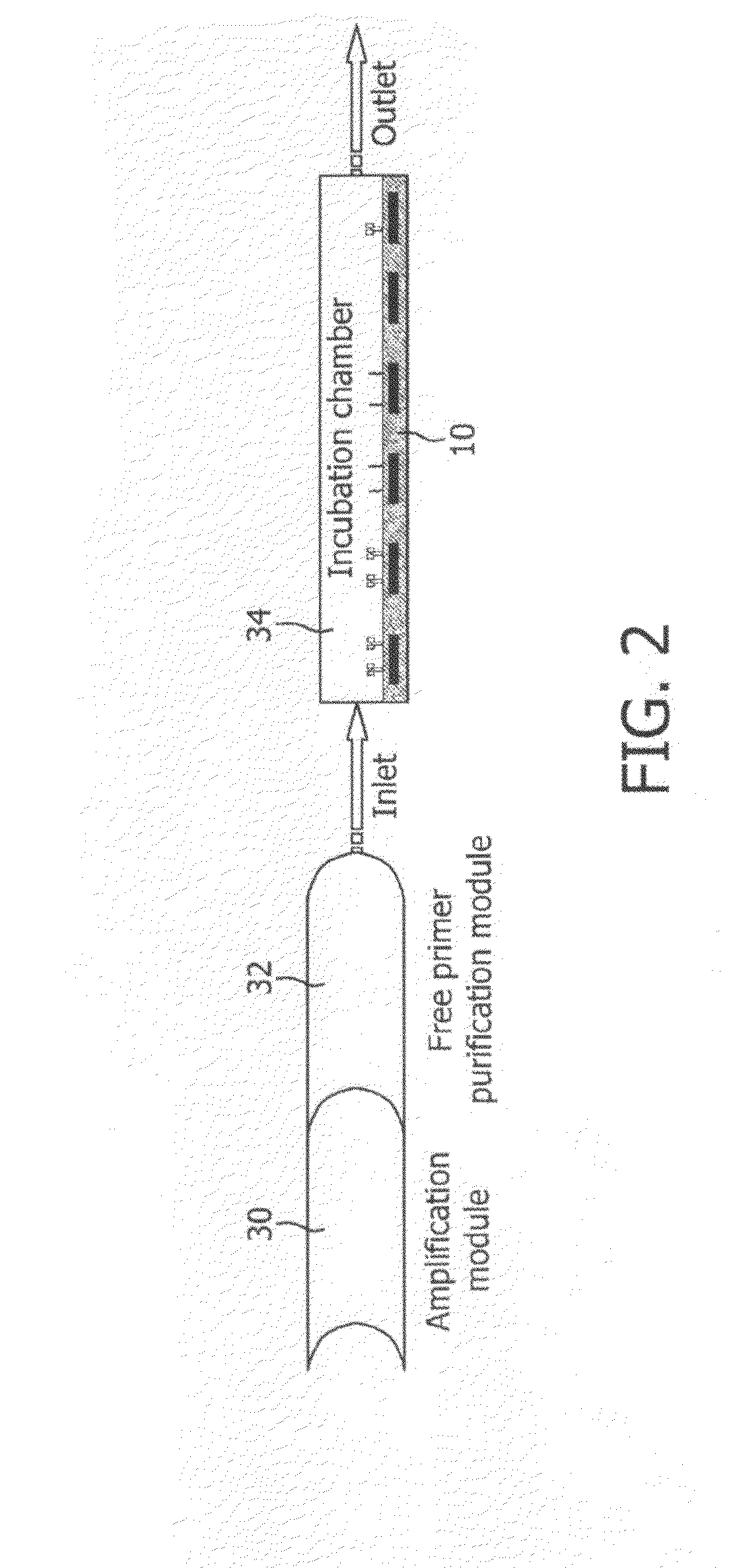Monitoring of enzymatic processes by using magnetizable or magnetic objects as labels
- Summary
- Abstract
- Description
- Claims
- Application Information
AI Technical Summary
Benefits of technology
Problems solved by technology
Method used
Image
Examples
example 2
PCR Amplification using Amplimers with Magnetic Label
[0151]After an optional nucleic acid extraction step, amplification of nucleic acids is performed according to the PCR protocol with amplimers of which one is coupled covalently to a magnetic particle and the other is not magnetically labelled. This example is illustrated schematically in FIG. 6. The amplification process results in one of the extended strands being labelled to magnetic micro- or nanoparticles via the attached primer.
[0152]In this example, the concentration of micro- or nanoparticles attached to the sensor 10 is intermittently measured, at a particular point in a repeating sequence (cycle).
[0153]The steps describing a preferred design and procedure and the additional options indicated according to this embodiment are essentially the same as described for the procedure in Example 1, although apart from the amplimers only one additional probe (sensor probe) is necessary, attached covalently to the sensor chip surfa...
example 3
Microarray Applications of the Invention
[0156]The procedures described in the previous examples enable the detection of amplified genetic material by magnetic field cycling and in some cases temperature cycling. Any of these methods is excellently suited to be applied in micro-array applications. The strength of interaction between probes immobilised at the sensor surface of the array and amplicons from the sample solution (in this case attached to magnetic nanoparticles) is more or less proportional to the extent of complementarity between probe and amplicon. By applying different forces across the array (e.g. different magnetic forces that depend on the array position) or by varying the forces as a function of time, various types of array sub-spots are identified, e.g. from spots loosing the attached amplicons and magnetic nanoparticles at low forces (e.g. non-specific or highly-degenerative hybridisation) up to spots with a very powerful binding between probe and amplicon (e.g. h...
PUM
| Property | Measurement | Unit |
|---|---|---|
| Magnetism | aaaaa | aaaaa |
| Velocity | aaaaa | aaaaa |
| Magnetic force | aaaaa | aaaaa |
Abstract
Description
Claims
Application Information
 Login to View More
Login to View More - R&D
- Intellectual Property
- Life Sciences
- Materials
- Tech Scout
- Unparalleled Data Quality
- Higher Quality Content
- 60% Fewer Hallucinations
Browse by: Latest US Patents, China's latest patents, Technical Efficacy Thesaurus, Application Domain, Technology Topic, Popular Technical Reports.
© 2025 PatSnap. All rights reserved.Legal|Privacy policy|Modern Slavery Act Transparency Statement|Sitemap|About US| Contact US: help@patsnap.com



